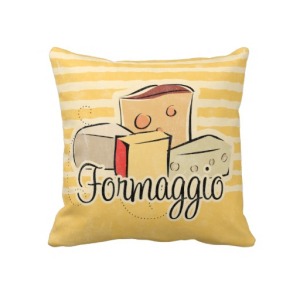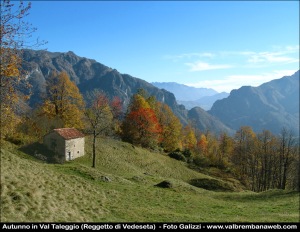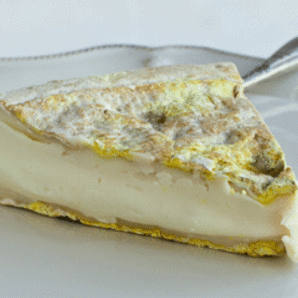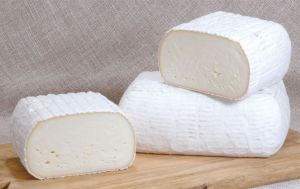Ooey Gooey Italian Beauties
Greetings! Happy 2013! As my sister said to me when I first made the transition into cheese official, “It’s going to brie an exciting year!” My response? “It cheddar be!” Kaufman family comedic genius aside, we were right. I’ve been so busy working with cheese that I haven’t had any time to write about it. Well, that’s going to change. There’s so much I want to tell you. Things are going wonderfully for me at work — I’m learning tons, tasting pounds, making amazing new curd-nerd friends, and I’ve recently been put in charge of ordering shop supplies! Glamorous? Not quite, but I now know the praise and appreciation one receives upon the arrival of a much-needed case of paper towels. Still, my love for cheese has not been replaced by a passion for latex gloves, so this blog will remain focused on what’s important. And, right now, I’m living and loving the Dolce Vida….surrounded by ooey, gooey and amazing formaggio.
The shop where I work carries about 80% domestic cheeses. So, with an inventory that includes only about 20% imports, you know those long distance travelers have to be good. Sure, a solid Parmiggiano Reggiano or a peppery Pecorino is a perennial fave, but I’m currently all about the stuff that’s soft, salty, spreadable…and a little bit stinky.
Taleggio
When it comes to stinky Italian cheese, Taleggio is like the Godfather. No offense to my Italian readers. I’m sure you’re kind of over all the mafia stuff but, this time, it fits. You do not tell Taleggio what to do — it tells you. As a cheesemonger, there are some cheeses you can push around…but not this one. If Taleggio wants to ooze, it’ll ooze. If Taleggio wants to stick, it’ll stick. You get the idea. There’s just no arguing with Taleggio…and there’s no denying its greatness, either.
Taleggio is an old cheese — an iconic stinker with a long history. Made in the caves of Lombardy’s Val Taleggio since the 9th century, there is evidence that this cheese was once used as currency. Delicious, pungent currency. Taleggio is a washed rind and smear-ripened cow’s milk cheese, meaning that the young slabs are covered in brine, as well as a secret solution that most likely contains bacteria, fungi, and the leftovers of Taleggios past. It sounds gross, but the results are anything but: A thin, firm, flavorful and sticky orange rind with a pudding-like, moist, and hopefully oozy paste hidden underneath. Like most washed rind cheeses, the taste of Taleggio is mild in comparison to its funky aroma. Still, this isn’t necessarily a bite for beginners. Our Taleggio is organic, soft, and scrumptious. The flavor is rich, beefy, dirty, and delightfully salty. The paste is pliable and one bite will coat your mouth with a velvety sensation that is nothing like Velveeta. Pair some with crusty bread, an Old World Pinot, and a willingness to indulge. Evviva!
Nuvola di Pecora
If Taleggio is the Godfather of stinky Italian Cheeses, then Nuvola di Pecora is like Michael Corleone — a classy & reluctant heir to the throne. However, Nuvola di Pecora can be a little bit like Fredo, as well — bold, charismatic, and entertaining. Or maybe I just don’t know The Godfather well enough to make references? I’ll stick to talking about cheese and I promise not to put any cow, sheep, goat or water buffalo heads in anyone’s bed.
The point is: Nuvola di Pecora doesn’t seem quite sure what it wants to be, and therein lies its beauty. The name Nuvola di Pecora literally translates into “sheep clouds”, and I can’t imagine a more fitting description. A beautiful, bumpy bloomy-rinded square wheel of fluffy, velvety aged sheep’s milk made by the River Po in the Emilia Romagna region of Italy, the older (and, in my opinion, better) wheels of Nuvola come decorated with splotches of beautiful neon yellow and aquamarine mold. This looks like a cheese that’s going to blast your sense of smell and taste (a la Fredo), but it’s much more mellow and refined (just like Michael). The paste is not quite creamy and not quite hard. Really, this is sheep’s milk custard, with added hints of root vegetables, steamed milk, and a pinch of toast-dipped-in-egg. Every now and then, we get a wheel that’s a little bit strong and a lot bit salty — and those are my favorite days. Either way, pair a thick slice of Nuvola with some thick fruity jam…or just a lush, fruity wine. No matter the pairing, you’ll go to bed dreaming of sheep clouds no matter what.
The Brothers di Bufala – Quadrello & Casatica
Running the mafia isn’t the only way to get into a family business. Just ask Alfio & Bruno Gritti of Caseificio Quattro Portoni, the makers of two of my new favorite cheeses: Quadrello di Bufala and Casatica di Bufala. The Quattro Portoni farm was founded in Bergamo, Italy in 1968 by Renato Gritti, father of Alfio & Bruno. Dairy farming started in 1970, but with one big different from the way they do it today: They were milking cows. In 1982 the operation was taken over by Alfio (who had received a degree in Veterinary Farming) and Bruno (a specialist in agronomic land management) and, in 2000, they made the decision to try their luck farming and milking Mediterranean water buffalo. How’d it go? Well, by 2003 they had decided they would only work with water buffalo and, in 2005, they began making and selling rich, delicious, water buffalo’s milk cheeses. I love these brothers, and not just because their products make my taste buds sing. These guys have some good ideas, and they describe their mission like this (roughly translated from Italian to English): “To combine the ancient Lombardy tradition of cheesemaking with the exceptional characteristics of buffalo milk…to suggest a novelty capable of stimulating the interests of experts in high quality products.” I like the way the Gritti brothers mix old-world tradition with innovation and I admire the way they boldly aim to please. It’s true that water buffalo’s milk is exceptionally rich and wonderful, and there’s no better place to see it at work than in these two cheeses.
Quadrello di Bufala
Remember Taleggio? Well, this is its buffalo’s milk counterpart (don’t worry, I’m done with the Godfather comparisons). Raw milk is formed into square slabs, washed in brine, and then aged for 2-3 months. The thin, slightly sticky rind varies in color: some wheels are light and pink like the one shown above, and some are dark and tough, an almost-gray or brown brick. No matter the exterior, the paste is always a treat: soft, fudgy, and crisply white, Quadrello di Bufala is a mild, milky, sweet, and sometimes fruity play on the classic Taleggio recipe. Want an Italian cheese that looks awesome and will appeal to every palate? Go for Quadrello….or Casatica.
Casatica di Bufala
Oh Casatica di Bufala, my newest creamy obsession. While Quadrello is inspired by Taleggio, Casatica di Bufala is a more traditional stracchino (or ‘stretched curd’) style of cheese. Water buffalo’s milk contains about twice the fat content of cow’s milk, and this luscious decadence is on full display in Casatica. The intact wheel looks like a squat, fat, snow-covered log, due to its thick and bloomy rind. Cut this cheese into chunky slices and let the paste take center stage. Soft-ripened and aged for only a few weeks, Casatica is much creamier than Quadrello, extremely spreadable and delicately sweet, salty, and a little bit savory. I’m not usually a fan of bloomy rinds (yep, I’m that person who tunnels into the Brie), but for Casatica I make an exception. Instead of something limp and bitter, you get a nice crunch and roasted garlic-y bite from Casatica’s rind, the perfect complement to its sweet and creamy paste. Put this on some toasted foccacia and it’s the most buttery garlic bread you’ve ever had. Or just eat it off the knife. No judgment here.







